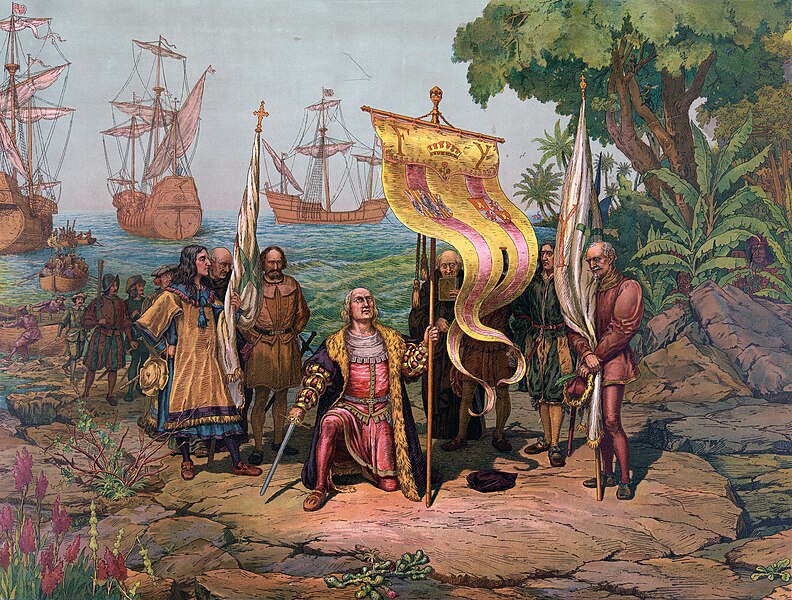Why?
Firstly, Columbus was not Spanish - he was an Italian born in Genoa.
Secondly, he is credited with discovering America so we can blame him for the proliferation of fast food outlets like McDonalds.
Thirdly, most of the time he did not know where he was - he thought he was in the Orient when, in fact, he was in Central America.
 |
| Christoper Columbus arrives in America - L. Prang & Co., Boston |
Seriously, though, Christopher Columbus was a famous explorer who, convinced that the World was round when most thought it was flat, persuaded Ferdinand and Isabella to sponsor him on his voyages to the New World. Of course, he did not know it was the New World at the time - he thought that travelling in a westerly direction he would arrive in India. He did not bargain for the small matter that the continental masses of the Americas were in the way!
He set sail on his first voyage on 3 August 1492 in the Santa María. On 12 October he reached San Salvador island in the Bahamas - hence the celebration date. On further trips he discovered Dominica, Puerto Rico, Jamaica, Trinidad and the east coast of Central America including Honduras and Panama.
Columbus was born in Genoa, Italy in 1451.
He spent several years as a mariner in the Portuguese marine. However, he yearned for more status and wished to accumulate riches for his family. He also believed that China and India could be reached by sailing in a westerly direction. Columbus sought sponsorship for his aims and, after a number of rejections, he finally obtained royal support from Spain - King Ferdinand and Queen Isabella agreed to bankroll his first voyage in January 1492.
He made four voyages and we know now that he did not reach India but, instead, discovered America - or part of it! It is widely believed that he was the first European to sail across the Atlantic Ocean and to set foot on the American continent.
He discovered most of the islands of the Caribbean as well as countries in Central America including Nicaragua, Costa Rica, Panama and Venezuela. He established a base in Hispaniola - an island now divided into Haiti and the Dominican Republic.
Christopher Columbus died in 1506 at Valladolid but his bones were taken to Hispaniola - to the Cathedral of Santo Domingo that is now in the Dominican Republic.
"Photographs of
|
|
"postcards from
|
|
"you couldn't make it up!"
|
|
"a grumpy old man in
|
|
"bits and bobs"
|
|
"Spanish Expressions"
|
|
"Spanish Art"
|
|
"Books About
|





























+pd+Dariorueda90.jpg)





+pd+Mattis.JPG)
